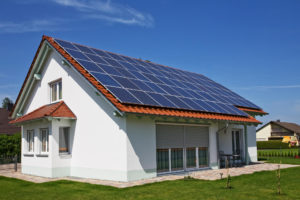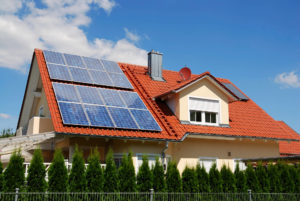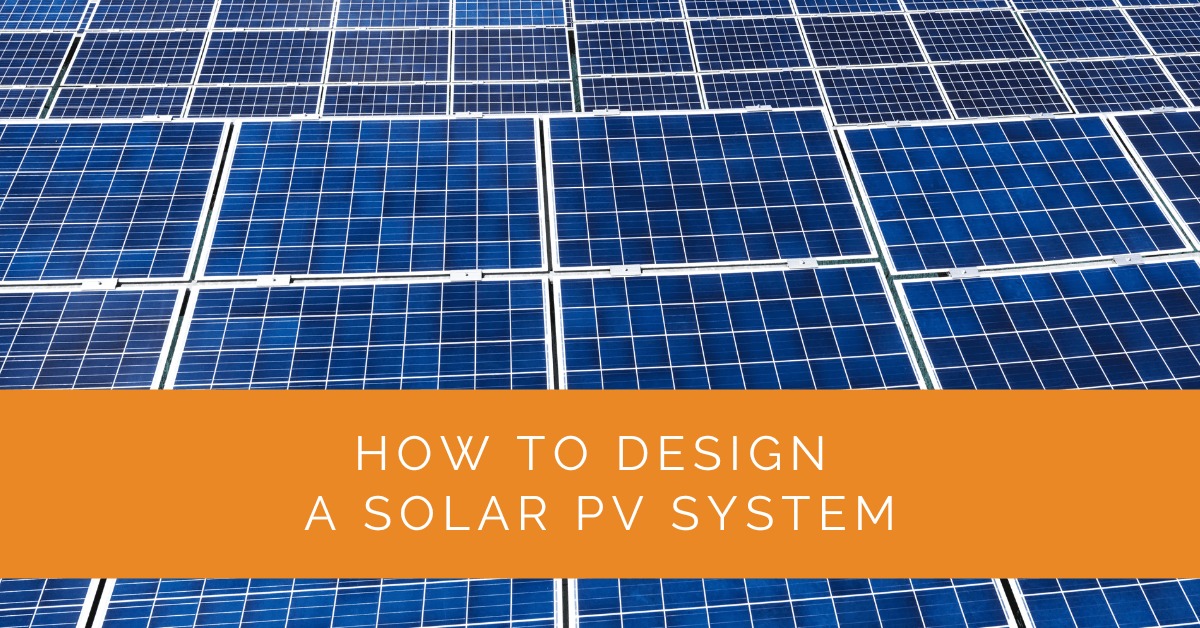The design of a solar PV system plays a crucial role in maximizing energy generation and optimizing system performance. This comprehensive guide will walk you through the key factors, calculations, and considerations in designing a highly efficient solar PV system.
Contents
- 1 Key Takeaways
- 2 Factors to Consider in System Design
- 3 Design Considerations for Maximum Efficiency
- 4 Case Study: Designing a High-Efficiency Solar PV System for a Residential Property
- 5 Expert Insights From Our Solar Panel Installers About Designing a Solar PV System
- 6 Experience Solar Excellence with Us!
- 7 Conclusion
- 8 FAQ
Key Takeaways
- Designing an effective solar PV system requires careful consideration of energy requirements, site assessment, component selection, and proper sizing of inverters and charge controllers.
- Maximizing efficiency involves optimizing panel placement and orientation, ensuring proper wiring and electrical safety, and implementing monitoring and maintenance systems.
- Solar PV system owners can achieve optimal performance, maximize energy generation, and contribute to a sustainable energy future by following these design considerations.
Factors to Consider in System Design
To design an effective solar PV system, several crucial factors must be carefully considered:
Energy Requirements and Consumption Analysis
Analyzing your energy requirements is the foundation of a well-designed solar PV system. Begin by assessing your current and future energy needs based on your appliances’ power ratings and usage patterns. This analysis will help determine the system size and capacity required to meet your energy demands effectively.
Consider your daily energy consumption and the specific load profile of your property. Consider any seasonal variations in energy usage and factor in future expansions or changes in your electricity needs. Accurate energy consumption analysis is vital to ensure your solar PV system is appropriately sized for optimal performance.
Site Assessment and Shading Analysis
A thorough site assessment is crucial to determine the solar potential of your location. Assess the orientation and tilt of your rooftop or available land for solar panel installation. Consider any obstructions, such as nearby buildings, trees, or other structures, that could cast shadows on your panels.
Conduct a detailed shading analysis to identify the patterns throughout the day and year. Tools such as solar pathfinders, shade analysis software, or professional solar consultants can assist in accurately assessing shading impacts on your solar PV system’s performance.
Additionally, consider the available space for panel installation and evaluate if the location is suitable for solar panel mounting. South-facing rooftops with minimal shading generally offer the best solar exposure, but east and west-facing orientations can also be viable options depending on the specific circumstances.
Selecting the Right Solar Panels
Choosing the right solar panels is crucial for your solar PV system’s overall performance and longevity. Consider the following aspects when selecting panels:
- Efficiency: Higher efficiency panels produce more electricity per unit area and are particularly beneficial when space is limited.
- Power Output: Compare the power ratings of different panels to ensure they meet your energy requirements.
- Durability: Look for panels with robust construction and resistance to environmental factors such as hail, wind, and temperature variations.
- Warranty: Check the manufacturer’s warranty, which indicates the panel’s expected lifespan and performance reliability.
It is also important to understand the different types of solar panels available, such as monocrystalline, polycrystalline, or thin-film. Each type has advantages and considerations, so choose the one that aligns with your specific requirements and budget.

Determining the Number of Solar Panels
The number of solar panels required depends on the energy consumption analysis, available space, and the desired system capacity. Consider the following factors when determining the optimal quantity of solar panels:
- Panel Size: Evaluate the physical dimensions of the panels and the available installation space. Smaller panels may require more to achieve the desired system capacity.
- Efficiency and Power Output: Panels with higher efficiency and power output will require fewer units to meet the desired energy generation targets.
- Space Constraints: If space is limited, higher efficiency panels or alternative mounting options such as tilt frames or solar trackers may be considered to maximize energy production.
By accurately calculating the number of solar panels needed, you can ensure optimal system performance and achieve your energy generation goals.
Sizing the Inverter and Charge Controller
The inverter and charge controller selection is critical for properly functioning your solar PV system. Consider the following factors:
- Inverter Capacity: Choose an inverter that can handle the total DC capacity of your solar PV system. Consider the nominal voltage, maximum power point tracking (MPPT) capability, and the ability to withstand surge power demands.
- Charge Controller Specification: Select a charge controller that matches the battery bank’s capacity and voltage requirements for battery-based systems. Ensure the charge controller has the necessary features to regulate the charging process, prevent overcharging or discharging, and protect the battery bank’s lifespan.
When sizing the inverter and charge controller, it’s essential to consider future expansions or upgrades to your solar PV system. Adequate sizing will allow for potential system growth without major equipment changes.
Incorporating Battery Storage (if applicable)
Battery storage can enhance the self-consumption and reliability of your solar PV system. If you intend to incorporate battery storage, consider the following:
- Battery Capacity: Determine the capacity of the battery bank based on your energy storage requirements, such as the amount of energy you want to store for use during periods of low sunlight or grid outages.
- Battery Type: Choose battery chemistry that aligns with your specific needs, such as lead-acid or lithium-ion batteries. Consider factors like cycle life, depth of discharge, efficiency, and maintenance requirements.
- Voltage Compatibility: Ensure the battery bank’s voltage matches the inverter and charge controller specifications to ensure seamless integration and efficient energy transfer.
Properly sizing the battery bank and selecting the right type of battery will ensure optimal performance, maximize self-consumption, and provide backup power during grid outages.

Design Considerations for Maximum Efficiency
To achieve maximum efficiency and performance from your solar PV system, consider the following design considerations:
Optimizing Panel Placement and Orientation
Proper panel placement and orientation are crucial for maximizing energy capture. Orient the panels to face the optimal direction (usually south in the Northern Hemisphere) to receive maximum sunlight exposure throughout the day. Consider the tilt angle based on your latitude to maximize energy production throughout the year.
Minimize shading by carefully selecting the installation location and periodically trimming any nearby trees or foliage that may obstruct sunlight. If shading is unavoidable, consider using technologies such as micro-inverters or power optimizers to mitigate the impact of shading on the overall system performance.
Ensuring Proper Wiring and Electrical Safety
Efficient wiring and adherence to electrical safety standards are essential for optimizing system performance. Use appropriately sized cables to minimize voltage drop and power losses. Properly route and protect the wiring to ensure safety and longevity.
Follow local electrical codes and regulations when designing the wiring system. Consider using surge protection devices to safeguard your solar PV system from voltage spikes and transient surges, ensuring the longevity and protection of your components.
Implementing Monitoring and Maintenance Systems
Integrating a monitoring system allows you to track your solar PV system’s energy production and performance. Real-time monitoring helps identify any issues or underperformance, enabling prompt action to rectify problems and optimize system efficiency.
Establish a maintenance plan that includes regular inspections, cleaning of solar panels, and checking the condition of the components. Periodic maintenance ensures that the system operates optimally and extends the lifespan of your solar PV system.
Monitor system performance indicators such as energy production, voltage, and current to identify deviations or abnormalities. Regularly review data from the monitoring system to assess the system’s health and identify opportunities for improvement or troubleshooting.
Case Study: Designing a High-Efficiency Solar PV System for a Residential Property
Background
At Solar Panels Network USA, we were approached by a homeowner looking to install a solar PV system that would maximize energy generation and reduce their reliance on the grid. The client desired a comprehensive solution that would meet their current and future energy needs while ensuring long-term performance and sustainability.
Project Overview
The client’s primary goals were to achieve significant energy savings, reduce their carbon footprint, and enhance energy independence. They required a system design tailored to their unique energy consumption patterns and site conditions. Our project involved an in-depth energy analysis, precise component selection, and strategic system design to ensure optimal performance.
Implementation
Energy Requirements and Consumption Analysis
We began with a detailed energy audit to understand the client’s electricity usage. This included analyzing their historical electricity bills, identifying peak consumption periods, and considering any future energy needs due to planned home expansions or new appliances. This analysis provided a clear picture of the required system capacity to meet the client’s energy demands.
Site Assessment and Shading Analysis
Next, we conducted a comprehensive site assessment to evaluate the solar potential of the client’s property. This involved examining the orientation and tilt of the roof, as well as identifying any potential shading from nearby trees or structures. We used advanced shade analysis tools to map out shading patterns throughout the day and year, ensuring the optimal placement of solar panels.
Selecting the Right Solar Panels
Based on the site assessment and energy analysis, we selected high-efficiency monocrystalline solar panels known for their superior performance and durability. These panels were ideal for the client’s space-constrained roof, offering maximum power output per unit area.
Determining the Number of Solar Panels
To achieve the desired energy generation, we calculated the number of solar panels needed based on their efficiency and power output. This involved careful consideration of the available roof space and the client’s energy goals. We opted for a combination of standard and high-efficiency panels to balance performance and cost.
Sizing the Inverter and Charge Controller
We selected an inverter with a capacity to handle the total DC power generated by the solar panels. The inverter featured advanced MPPT (Maximum Power Point Tracking) capabilities to optimize energy conversion. For battery storage integration, we chose a charge controller that matched the battery bank’s voltage and capacity requirements, ensuring efficient energy management.
Incorporating Battery Storage
To enhance the system’s reliability and self-consumption, we included a lithium-ion battery storage system. The battery bank was sized to store sufficient energy for use during peak demand periods and grid outages. This setup provided the client with greater energy independence and resilience.
Optimizing Panel Placement and Orientation
The panels were strategically oriented to face south, maximizing exposure to sunlight. We adjusted the tilt angle to match the client’s latitude, ensuring optimal energy capture throughout the year. We also installed micro-inverters to mitigate the impact of partial shading on overall system performance.
Ensuring Proper Wiring and Electrical Safety
We implemented efficient wiring practices to minimize voltage drop and power losses. The wiring was routed and protected to meet local electrical codes and safety standards. Surge protection devices were installed to safeguard the system from voltage spikes and transient surges.
Implementing Monitoring and Maintenance Systems
A state-of-the-art monitoring system was integrated to track real-time energy production and system performance. This allowed the client to monitor their energy generation, detect issues promptly, and optimize system efficiency. We provided a maintenance plan, including regular inspections and cleaning schedules, to ensure long-term reliability.
Results
The solar PV system successfully met the client’s energy needs, significantly reducing their electricity bills and carbon footprint. The high-efficiency panels and strategic design maximized energy generation, providing substantial energy savings. The inclusion of battery storage enhanced the system’s reliability, ensuring continuous power supply during grid outages.
The monitoring system enabled the client to track performance and address any issues quickly, ensuring optimal system operation. Regular maintenance kept the panels clean and efficient, extending their lifespan and ensuring consistent energy production.
Summary
This case study highlights the importance of a detailed and methodical approach to designing a solar PV system. From energy analysis and site assessment to component selection and system optimization, every step is crucial for maximizing performance and achieving energy goals. By understanding the client’s needs and leveraging advanced technologies, we delivered a high-efficiency solar PV system that provided significant energy savings and long-term sustainability.
At Solar Panels Network USA, our commitment to excellence ensures that each solar PV system is designed and implemented to the highest standards. Our expertise and dedication empower homeowners to harness the power of renewable energy and contribute to a greener future.
Expert Insights From Our Solar Panel Installers About Designing a Solar PV System
Conducting a thorough site assessment and shading analysis is vital. This ensures your panels receive maximum sunlight and operate at peak efficiency.
Senior Solar Engineer
Choosing the right inverter and charge controller is crucial for the system’s performance. Proper sizing can prevent overloading and ensure seamless energy conversion.
Solar Installation Specialist
Implementing a robust monitoring system allows you to track performance in real time and address any issues promptly, ensuring long-term efficiency.
Solar Maintenance Expert
Experience Solar Excellence with Us!
Trust in Solar Panels Network USA, where our seasoned experts deliver top-quality solar solutions for homes and businesses nationwide. With a legacy of countless successful installations and a commitment to sustainable energy, we’re your reliable partner in the solar journey. Ready for a brighter, eco-friendly future? Call us now at (855) 427-0058 and harness the power of the sun!
Conclusion
Designing a solar PV system requires careful consideration of energy requirements, site assessment, component selection, and design considerations. By following this comprehensive guide, you can design an efficient and optimized solar PV system that harnesses the power of renewable energy, reduces your reliance on the grid, and contributes to a sustainable future. Remember to perform accurate calculations, analyze your energy consumption, and assess shading patterns to ensure the optimal sizing of your solar PV system. By selecting the right components, optimizing panel placement, and implementing monitoring and maintenance systems, you can maximize energy generation and enjoy the long-term benefits of clean, renewable solar power. Design your solar PV system confidently and embark on a journey towards a greener, more sustainable energy source for your home or business.
FAQ
How to design a simple solar PV system?
Designing a simple solar PV system involves considering your energy requirements, analyzing site conditions, selecting appropriate solar panels, sizing the inverter and charge controller, and optimizing panel placement. Follow the steps outlined in our article to ensure an effective design.
What are the steps in PV system design?
PV system design typically involves the following steps:
- Analyzing energy requirements and consumption patterns
- Conducting a site assessment and shading analysis
- Selecting the right solar panels based on efficiency, power output, and durability
- Determining the number of panels and sizing the inverter and charge controller
- Incorporating battery storage if necessary
- Optimizing panel placement and orientation
- Ensuring proper wiring and electrical safety
- Implementing monitoring and maintenance systems
Follow these steps to design a well-functioning solar PV system.
What is the 120 rule for solar PV?
The 120 rule is a guideline used to determine the maximum voltage for a solar PV system to avoid potential safety hazards. According to this rule, the PV array’s maximum open-circuit voltage (VOC) should not exceed 120 volts for systems that do not require a licensed electrician. However, electrical codes and regulations may vary by location, so it is essential to consult local guidelines and work with a qualified professional for proper system design and installation.
About the Author
Solar Panels Network USA stands at the forefront of solar energy solutions, driven by a team of seasoned solar engineers and energy consultants. With over decades of experience in delivering high-quality solar installations and maintenance, we are committed to promoting sustainable energy through customer-centric, tailored solutions. Our articles reflect this commitment, crafted collaboratively by experts to provide accurate, up-to-date insights into solar technology, ensuring our readers are well-informed and empowered in their solar energy decisions.

